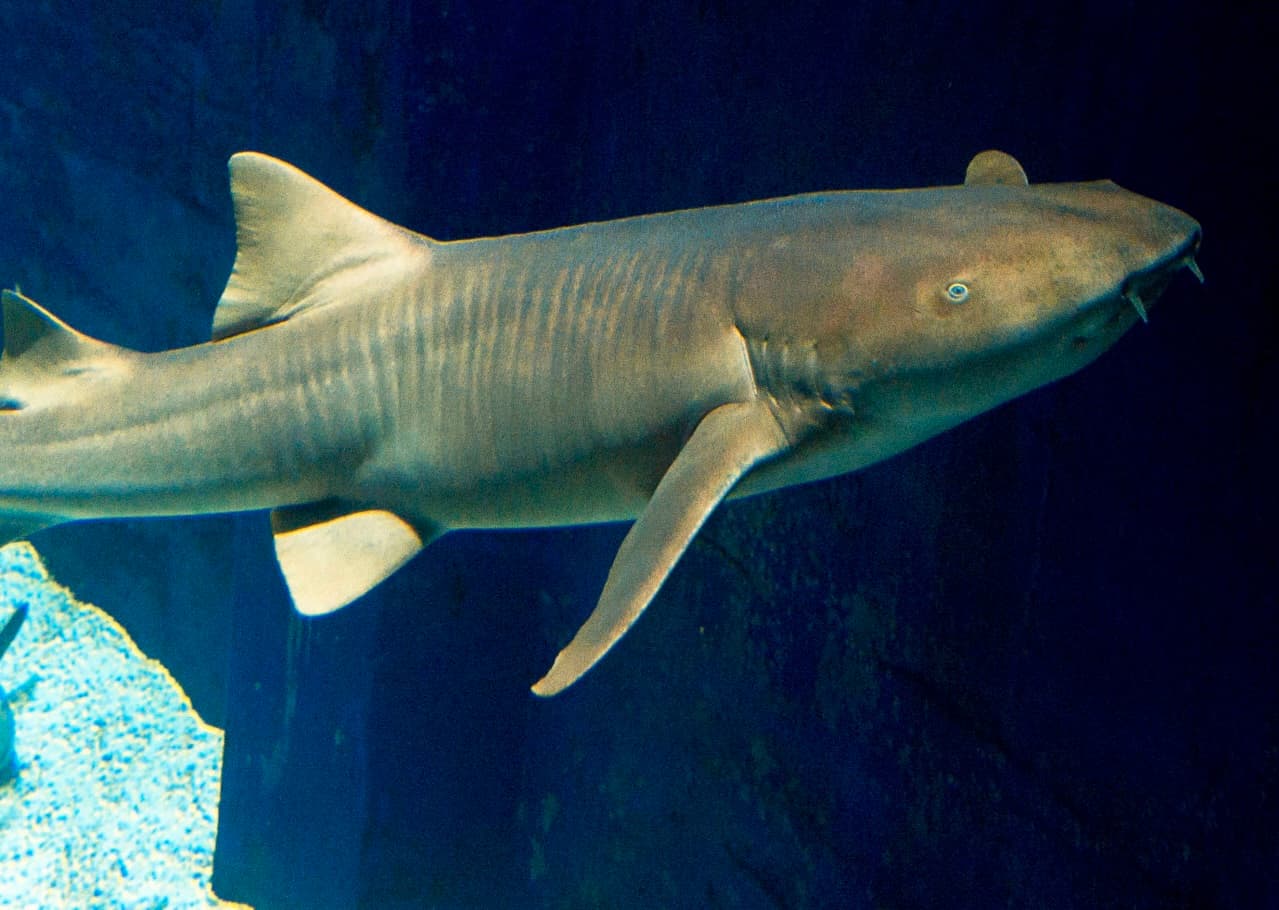
Tubarões Lixa
A reprodução sob cuidados profissionais minimiza a pressão da pesca exploratória sobre diversas espécies de peixes. Desta forma, evita o desaparecimento dessas espécies no meio ambiente, objetivando a sustentabilidade. O condicionamento promove uma proximidade entre o animal e o tratador, facilitando procedimentos veterinários e de manejo.
Tubarões Lixa (Ginglymostoma cirratum) são encontrados nos oceanos Atlântico e Pacífico. Possuem hábitos solitários e por vezes são vistos em pequenos grupos caçando juntos. São mais ativos à noite e possuem uma alimentação bastante variada (crustáceos, equinodermos, moluscos, peixes ósseos, raias e tubarões menores). Podem chegar a medir 4,3 metros e viver cerca de 25 anos. São ovovivíparos e o seu comportamento reprodutivo é comum a todas as espécies de tubarões, com os machos utilizando a boca para segurar as fêmeas para a realização da cópula. De acordo com a União Internacional para Conservação da Natureza e dos Recursos Naturais, existem poucos dados para a estimativa de perigo de extinção da espécie, devido ao seu declínio a pesca está sendo proibida. Os tubarões desta espécie são comuns em aquários para pesquisa, no AquaRio utilizamos uma técnica de condicionamento chamada Imobilidade Tônica, que tem a função de conduzir respostas ao animal após estímulos, como por exemplo a alimentação. Esta técnica promove uma proximidade ao tratador, facilitando a administração de medicamentos e vitaminas. Neste tanque também encontramos nossos tubarões lixas que costumam ficar sobre o fundo do tanque. No AquaRio utilizamos uma técnica de condicionamento chamada Imobilidade Tônica, que tem a função de conduzir respostas ao animal após estímulos, como por exemplo a alimentação. Esta técnica promove uma proximidade ao tratador, facilitando a administração de medicamentos e vitaminas.
Espécies do tanque
Tubarão-lixa

Também conhecido como lambaru, o tubarão-lixa é uma espécie encontrada no oceano Atlântico. Vive em ambiente marinho e estuarino associado a recifes, em profundidades com intervalo entre 0 e 130 m. São tubarões de hábitos solitários e por vezes são vistos em pequenos grupos caçando juntos. São mais ativos à noite e possuem uma alimentação bastante variada, desde crustáceos, equinodermos, moluscos, peixes ósseos, raias e até tubarões menores. Podem chegar a medir 4,3 m e viver cerca de 25 anos. São ovovivíparos e o seu comportamento reprodutivo é comum a todas as espécies de tubarões, com os machos utilizando a boca para segurar as fêmeas para a realização da cópula. De acordo com a União Internacional para Conservação da Natureza e dos Recursos Naturais (IUCN), existem poucos dados para a estimativa de risco de extinção da espécie, mas devido o seu declínio a pesca está sendo proibida. Contudo, segundo o Instituto Chico Mendes de Conservação da Biodiversidade (ICMBio), essa espécie está na categoria de ameaça “Vulnerável”. Os tubarões-lixa são comuns em aquários para pesquisa e conservação. No AquaRio utilizamos uma técnica de condicionamento chamada “Imobilidade Tônica”, que tem a função de induzir respostas ao animal, permitindo um melhor condicionamento deste para qualquer tipo de tratamento necessário, como aplicação de medicamentos e transporte, além de aproximar mais o animal ao tratador.




